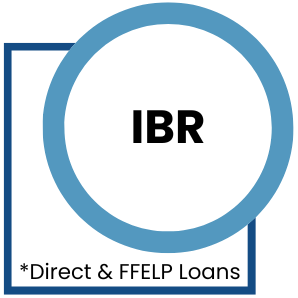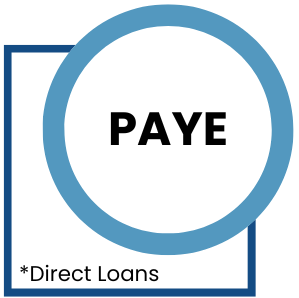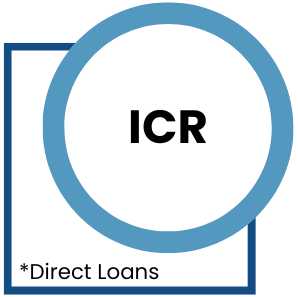On This Page
Eligible Borrowers:
Any Direct Loan borrower with an eligible loan type may choose this plan.
Monthly Payment:
Your monthly payments will be 10 percent of discretionary income until changes in the Summer of 2024.
Starting in the Summer 2024, borrowers on the SAVE plan will have their payments on undergraduate loans cut in half (reduced from 10% to 5% of income above 225% of the poverty line). Borrowers who have undergraduate and graduate loans will pay a weighted average of between 5% and 10% of their income based upon the original principal balances of their loans.
Starting Summer 2023, if you’re making $32,800 a year or less (which is roughly $15 dollars an hour), your monthly payment will be $0. If you’re making more than that, you will save at least $1,000 a year, compared to other IDR plans.
Payments are recalculated each year and are based on your updated income and family size.
You must update your income and family size each year, even if they haven’t changed.
Spousal income is excluded for borrowers who are married and file separately.
Time Frame:
Any outstanding balance on your loan will be forgiven if you haven’t repaid your loan in full after 20 years (if all loans were taken out for undergraduate study) or 25 years (if any loans were taken out for graduate or professional study).
You may have to pay income tax on any amount that is forgiven.
You may be eligible for loan forgiveness after 10 years if you are seeking Public Service Loan Forgiveness.
Eligible Loans:
- Direct Subsidized and Unsubsidized Loans
- Direct PLUS Loans made to students
- Direct Consolidation Loans that do not include PLUS loans (Direct or FFEL) made to parents
The Saving on a Valuable Education (SAVE) plan (formerly the REPAYE program) provides the lowest monthly payment amount of any Income-Driven Repayment (IDR) plan available to most borrowers. The SAVE plan differs from other IDR plans in several ways, including:
- The SAVE plan offers a lower monthly payment amount because it increases the income exemption from 150% to 225% of the poverty line.
- The SAVE plan eliminates 100% of remaining interest for both subsidized and unsubsidized loans after a scheduled payment is made. This means if you make your monthly payment, your loan balance won’t increase due to unpaid interest.
- The SAVE plan excludes spousal income for borrowers who are married and file federal taxes separately from their spouse.
For more information about the SAVE plan, visit StudentAid.gov/save.
How to Apply
If you are already enrolled in SAVE, you will automatically be placed on the SAVE plan once it becomes available. The application for the new SAVE plan will be available Summer 2023.
The quickest and easiest way to submit your request for SAVE is online. You will need your FSA ID, personal information, spouse information (if applicable), and income information to complete the request.
If you are unable to complete the online request, you have the option to use the form instead.
You must annually recertify your family size and provide income documentation in order for us to determine your continued eligibility under the SAVE plan. For your convenience, you can provide consent for the Department of Education (ED) to obtain your federal tax information directly from the IRS; this will enable ED to automatically recertify your IDR plan annually. To do so, visit StudentAid.gov/idr to opt-in. Otherwise, we will send you a reminder prior to the recertification due date. If the required documentation is not received by the annual recertification deadline, then your SAVE Plan will expire and your loan(s) will be placed into an Alternative repayment plan.
Eligibility
SAVE is available for Direct Loan borrowers only, and eligible loan types include: Direct Subsidized/Unsubsidized, Direct Grad PLUS, and Direct Consolidation loans. Direct Parent PLUS loans, defaulted loans, and consolidation loans that repaid a Parent PLUS loan cannot be repaid under the SAVE plan.
Monthly Payment Calculation
The SAVE plan calculates your monthly payment amount based on your income and family size. Your monthly payment amount is based on your discretionary income. Your discretionary income is the difference between your Adjusted Gross Income (AGI) and 225% of the poverty line amount for your family size and state. The payment amount is valid for 12 months and you requires annual recertification based on income. Your payment amount may change as your income or family size changes.
Starting Summer 2023, if you’re making $32,800 a year or less (which is roughly $15 dollars an hour), your monthly payment will be $0. If you’re making more than that, you will save at least $1,000 a year, compared to other IDR plans.
Starting next Summer 2024, borrowers on the SAVE plan will have their payments on undergraduate loans cut in half (reduced from 10% to 5% of income above 225% of the poverty line). Borrowers who have undergraduate and graduate loans will pay a weighted average of between 5% and 10% of their income based upon the original principal balances of their loans.
Note
The SAVE plan excludes spousal income for borrowers who are married and file federal taxes separately.
Loan Forgiveness
Under SAVE, your remaining balance will be forgiven after 20 or 25 years (you may qualify for forgiveness after 20 years if the loans being repaid under the SAVE plan include only loans you received to pay for undergraduate study, whereas you may qualify for forgiveness after 25 years if the loans being repaid under the SAVE plan include a loan you received to pay for graduate or professional study).
You may be eligible for loan forgiveness after 10 years if you are seeking Public Service Loan Forgiveness (PSLF).
Learn More About PSLFNote
The Department of Education (ED) is conducting a one-time adjustment of payment counts toward Income-Driven Repayment and Public Service Loan Forgiveness programs. For more information, visit StudentAid.gov/idradjustment.
Interest Subsidy
If your monthly payment amount under SAVE is not sufficient to pay the amount of interest that accrues on a monthly basis, the federal government will subsidize 100% of the remaining interest that is due for both subsidized and unsubsidized loans.
This means if you make your monthly payment, your loan balance won’t grow due to unpaid interest.
For example, if $50 in interest accumulates each month, and you have a $30 SAVE payment, then the remaining $20 would not be charged.
Payment Estimate
Interested in what your payment amount would be on SAVE? Use the Loan Simulator on StudentAid.gov.
Loan SimulatorAdditional Resources
- Video: How to Create an FSA ID
- SAVE FAQs
- Repayment Plan Comparison Chart
- FSA ID FAQs
- Income-Driven Repayment Plans (StudentAid.gov)
- Income-Driven Repayment Form
English
Need help?
We Are Here For You
Representatives are available Monday 8am - 11pm, Tuesday - Friday 8am - 8pm, Saturday 10am - 2pm Eastern Time





